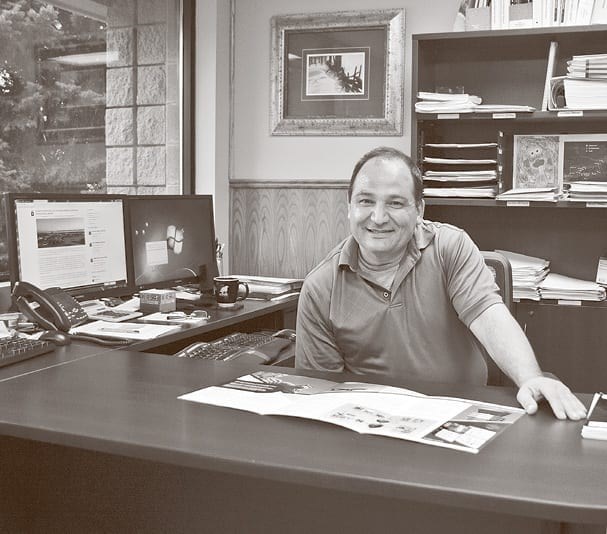Pelham-based radar experts to protect aircraft from birds
BY SAMUEL PICCOLO The VOICE
Accipiter, the Pelham-based radar company, has been awarded a contract to supply and deliver bird detection and observation services to Vancouver International Airport. Accipiter’s President and CEO Tim Nohara called the contract a significant step for a Canadian airport, since, he said, avian monitoring has been receiving growing attention abroad.
“After the airports were privatized, the issue was left to private companies,” said Nohara. “In the US, the [Federal Aviation Administration] has been at this. Transportation Canada used to be more involved in the R&D of this kind of thing, but the FAA is very active now.”
Nohara said that the move by a big airport like Vancouver’s to enlist Accipiter’s technology could prod other Canadian airports to follow suit.
“Big airports have very skilled teams,” he said, explaining that on-site biologists and bird experts are intimately familiar with the behaviour of the animals. Nohara said that a bird the size of a sparrow could take down a single-engined fighter plane.
“Our technology gives them glasses,” he explained.
Accipiter provides both equipment and software expertise to translate raw radar data, which shows the location of birds in a ten kilometre radius, into useable information. The system highlights patterns in bird movement to better help airport staff predict—and react to—incoming birds.
“Birds are just like us,” said Nohara. “They get up in the morning and they start moving around. They go to work. They like the beach.”
He said that mornings and evenings are the times when bird activity is most likely, but during migration season they may be flying all night.
“Seventy-five percent of the time that planes hit birds it’s below five hundred feet. That decreases exponentially as you get higher. But still, planes have hit birds as high as eighteen or twenty thousand feet up,” said Nohara, who added that there remains a lack of awareness around the threat that birds pose to passenger aircraft.
“It’s been luck so far. There have been losses of life but they are infrequent,” he said.
Nohara pointed to US Airways Flight 1549, which struck a flock of Canada geese just after taking off from New York’s LaGuardia Airport in 2009. The plane lost all engine power and was landed in the Hudson River by Captain Chesley “Sully” Sullenberger. All 155 people aboard the plane survived.
When asked whether birds came to mind when Nohara learned of the recent emergency landing of a Southwest Airlines flight in Pennsylvania, he said that it did, though added that there were many other malfunctions that could lead to such an event. The cause of the engine failure was not bird-related, so far as is known now.
After bird strikes in the United States, extensive tests occur to identify the type of bird involved.
“They take the ‘snarge’—that’s like the bug on the windshield—and send it to the Smithsonian for DNA testing,” said Nohara, adding that such DNA testing does not occur in Canada. The test results are incorporated into Accipiter’s approach.
“We use strike data to guide risk mitigation,” he said.
Nohara called bird radar an emerging market, saying that there are three main players—a company in Europe, one in the US, and Accipiter. In addition to Vancouver, Accipiter will also be providing its services to a new airport in Istanbul, Turkey, which is planned to be the largest in the world and is scheduled to open this fall.
Nohara said that Accipiter is not developing avian radar for on-board aircraft.
“It just doesn’t make sense right now,” he said. “The TCAS system that airplanes use to prevent collisions—people always ask if we could do that with birds. I think not.”
TCAS, or the Traffic Collision Avoidance System, allows for communication between planes in close proximity. If aircraft separation drops below a certain threshold, or appear to be on a collision course, the system will automatically negotiate a mutual avoidance manoeuvre, instructing each pilot what evasive action to take.
“It’s about the aircraft cooperating,” said Nohara. “One plane will climb and another plane will dive. You can’t do that with birds.”
The unpredictability of birds means that even if a plane altered its course to avoid an oncoming flock, it could just as easily be turning in to where the birds intend to go.
Prior to Accipiter’s current focus, Nohara’s company did work in underwater sonar, among other things.
“We never thought that we’d be tracking birds,” he said. “Then a naval base called us up and asked us if we could. We said, ‘We don’t know. But let’s try.’”
Nohara grew up in Niagara, though says that he moved away “as fast as he could.” He completed a PhD at McMaster University, and moved back to the region in 1995. He spoke of the challenges in creating a new technology company, especially well away from the industry’s main hubs, but said that he couldn’t be happier to have located Accipiter in Pelham.
“It’s great,” he said. “I’ve got my friends’ kids working here.”



